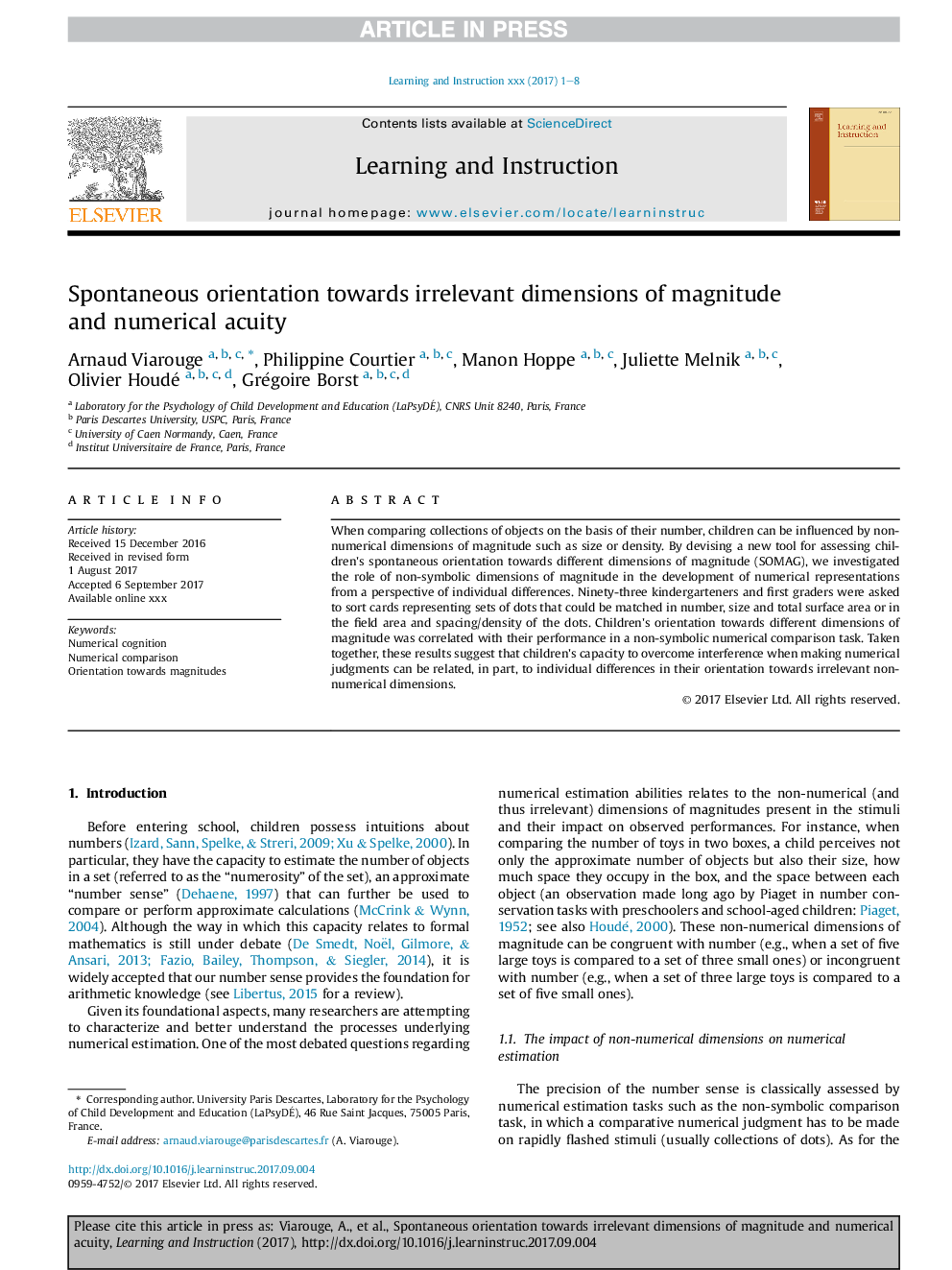| Article ID | Journal | Published Year | Pages | File Type |
|---|---|---|---|---|
| 6845676 | Learning and Instruction | 2018 | 8 Pages |
Abstract
When comparing collections of objects on the basis of their number, children can be influenced by non-numerical dimensions of magnitude such as size or density. By devising a new tool for assessing children's spontaneous orientation towards different dimensions of magnitude (SOMAG), we investigated the role of non-symbolic dimensions of magnitude in the development of numerical representations from a perspective of individual differences. Ninety-three kindergarteners and first graders were asked to sort cards representing sets of dots that could be matched in number, size and total surface area or in the field area and spacing/density of the dots. Children's orientation towards different dimensions of magnitude was correlated with their performance in a non-symbolic numerical comparison task. Taken together, these results suggest that children's capacity to overcome interference when making numerical judgments can be related, in part, to individual differences in their orientation towards irrelevant non-numerical dimensions.
Related Topics
Social Sciences and Humanities
Psychology
Developmental and Educational Psychology
Authors
Arnaud Viarouge, Philippine Courtier, Manon Hoppe, Juliette Melnik, Olivier Houdé, Grégoire Borst,
